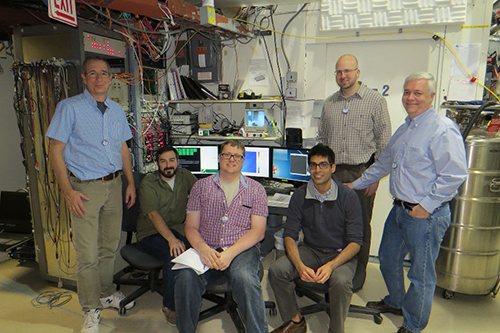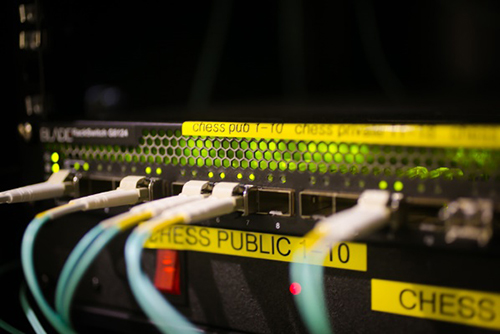X-RAY RUNS: Apply for Beamtime
2017 Nov 1 - Dec 21
2018 Feb 7 - Apr 3
2018 Proposal/BTR deadline: 12/1/17
2018 Apr 11 - Jun 4
2018 Proposal/BTR deadline: 2/1/18
Station A2 this week is testing the boundaries of data acquisition, storage and retrieval here at the Cornell High Energy Synchrotron Source (CHESS) and the results are terabytes! A group from Argonne National Lab is capturing a flood of data using the huge Pilatus3 6M detector, rotating crystal samples at slow speed while continuously (~10Hz) measuring diffraction of high energy (57 keV) x-rays in shutterless operation.
The results are literally a gigabyte of data approximately every 4 seconds (14 GB per minute) or several terabytes per day and at the end of their run could easily reach 30 Terabytes.
The group, consisting of researchers from Argonne’s Materials Science Division, Mathematics and Computer Science Division, and Advanced Photon Source is no stranger to this type of research: they have successfully created a framework for efficient transformation of thousands of detector frames to physical coordinates and collected data at the Advanced Photon Source (APS) utilizing a Pilatus 2M detector on a lower energy beamline.

L to R: Stephan Rosenkranz, Jacob Ruff, Matthew Krogstad, Anshul Kogar, Justin Wozniak, Raymond Osborn
Why then choose CHESS to do this research? CHESS is the whole package, the A2 beamline is uniquely suited; it provides flexibility in the X-ray energy over a large range and is setup with a low temperature sample environment for reciprocal space mapping. The availability of the Pilatus 6M detector with its unique ability to be moved to different stations; and the ability to easily integrate the group’s collection software with the CHESS-DAQ for real-time data collection.
It’s a synergy of systems collectively working together to produce phenomenal data.
But it doesn’t end there. The data will be transferred over a dedicated data acquisition (DAQ) network to long-term storage and archival media. This system, which is known as CHESS-DAQ, is free to our users, has hundreds of terabytes of available storage, and is simple and straightforward to access from remote locations via common file transfer protocols.

The successful commissioning of the CHESS-DAQ was the result of a strong collaboration with the CLASSE IT department and has involved over a year of planned upgrades, including a high-speed 10-gigabit network, high-throughput redundant storage devices accessible from the beamlines, and cutting edge processors for immediate data analysis.
Submitted by:
Kathy Dedrick, CHESS, Cornell University
10/13/2015
